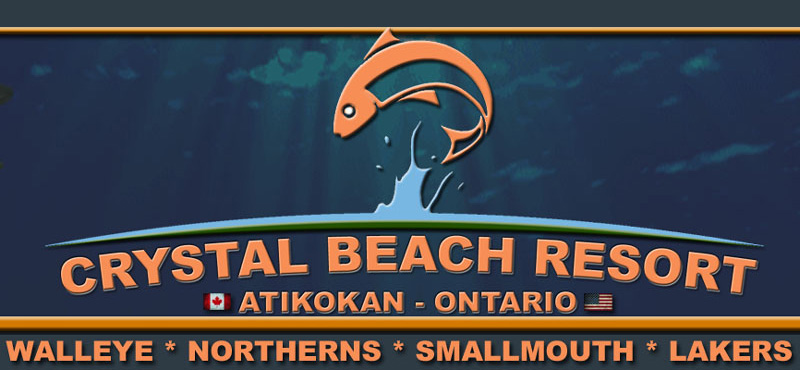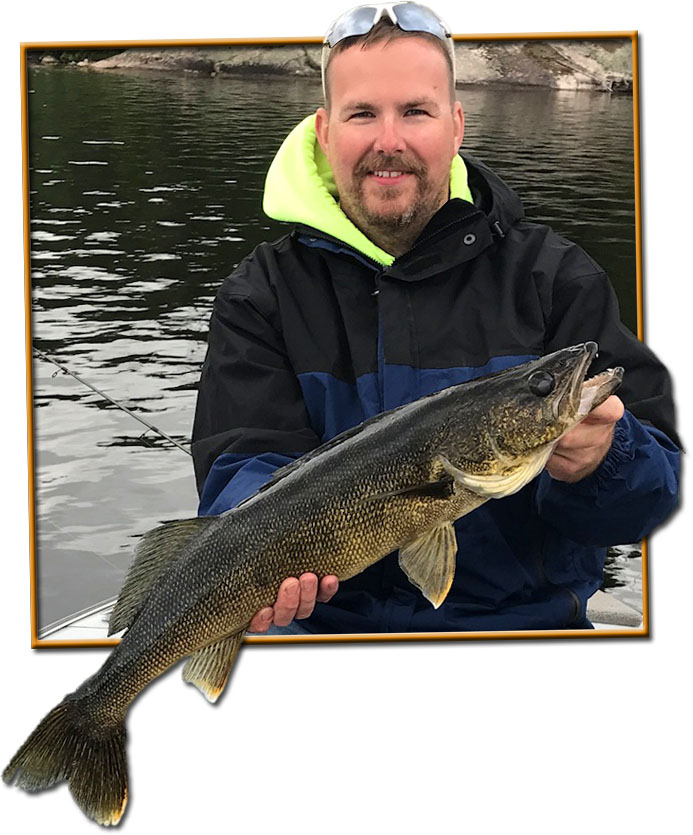





 Perhaps the best walleye fishing to be had is in the spring of the year. Walleyes are a very light sensitive feeder and usually bite best on cloudy and overcast days. During these bright, sunny days, they usually tend to be found a little deeper. The primary locations for spring walleye would be around areas where there is gravel, rocky spawning areas, and areas of good current, which also draw the spawning fish. Below river falls, and dam-like settings are prime locations. By far, the lure of choice in the spring of the year would be the jig and minnow combination, worked slowly along the bottom. Some of our favorite colors are hot pink and chartreuse, along with bright greens in the 1/8 to 3/8 ounce weights. Some of the newer power plastics, such as Berkley Power bait and Gulp plastics can be extremely effective not only in the spring, but throughout the year as well. The minnow-imitator plastics are better in the early part of the season, while leech and crawler imitations get better as season progresses.
Perhaps the best walleye fishing to be had is in the spring of the year. Walleyes are a very light sensitive feeder and usually bite best on cloudy and overcast days. During these bright, sunny days, they usually tend to be found a little deeper. The primary locations for spring walleye would be around areas where there is gravel, rocky spawning areas, and areas of good current, which also draw the spawning fish. Below river falls, and dam-like settings are prime locations. By far, the lure of choice in the spring of the year would be the jig and minnow combination, worked slowly along the bottom. Some of our favorite colors are hot pink and chartreuse, along with bright greens in the 1/8 to 3/8 ounce weights. Some of the newer power plastics, such as Berkley Power bait and Gulp plastics can be extremely effective not only in the spring, but throughout the year as well. The minnow-imitator plastics are better in the early part of the season, while leech and crawler imitations get better as season progresses.
As the spawn period comes to an end, most of the walleye will migrate out to slightly deeper waters with a little more structure. Island points, sunken reefs, and channel edges are all very good walleye attractors throughout most of the summer period. The walleyes on these types of structures can be found as shallow as 3-5 feet and as deep as 40 foot, depending on light conditions and time of day. Generally, mid-morning hours and late afternoon are best fishing periods during this time of the season. On occasion, the summer walleye can even be found and caught suspended over the deeper main lake basins, especially if the lake harbors a good population of suspending baitfish. One of the prime fishing patterns this time of the year is trolling lures like Rapala shad raps, sizes 7-9 in perch and minnow (black/blue) color patterns. If the water is more 'tea' colored, fluorescent colored crank baits can be prime attractors. Cotton Cordell Wally Divers, and Grappler shads, as well as Rapala deep diving Husky Jerks work very good. Once fish are located, often jigs tipped with leeches or spinner harnesses tipped with crawlers can be excellent! Again, bright green and hot pink colored jigs work very well.
Once the water temperatures begin to fall again in September, the walleyes tend to be more aggressive, and begin feeding more. The bite will seem to turn on and off throughout the day, and sometimes we have found that the middle of the day can be some of the fastest action!! You may hit a period when the walleyes will bite non-stop for an hour or so, and then turn right off for a while. The key is to be out on the water fishing to hit those feeding window opportunities. These fall walleye can be found in many of the key summer areas - sunken reefs, island points, and channel edges with current. Trolling crank baits can be a good way of locating the walleyes and if the action slows, try switching over to jigging. Drifting rocky, wind blown shorelines with live bait rigs can be rewarding also. A key is to keep trying different techniques until you find what is working well for you on the body of water you are fishing.
Recommended Walleye Gear:
• 6' - 71/2' medium to light spinning rod/ reel combos with 6-8lb monofilament works well year round
• 6'-71/2' medium to medium-light bait casting combos with 8-12lb works well especially for trolling techniques
Recommended Walleye Lures:
• Rapala minnow baits, Deep diving Husky Jerks, and Shad Raps in a variety of colors
• Cotton Cordell Wally Divers and Grappler Shads
• Lindy Shadling crank baits
• Jigs in bright colors (hot pink, lime green, chartreuse, etc) in 1/8oz to 1/4 oz for deeper water/current
• Variety of plastic shads, twister tails, and flukes/minnow imitations for tipping jigs.
• Gulp plastics are scented and biodegradable• Spinner rigs/harnesses for live bait trolling and drifting
• Berkley Power Baits are proving to be very productive plastics